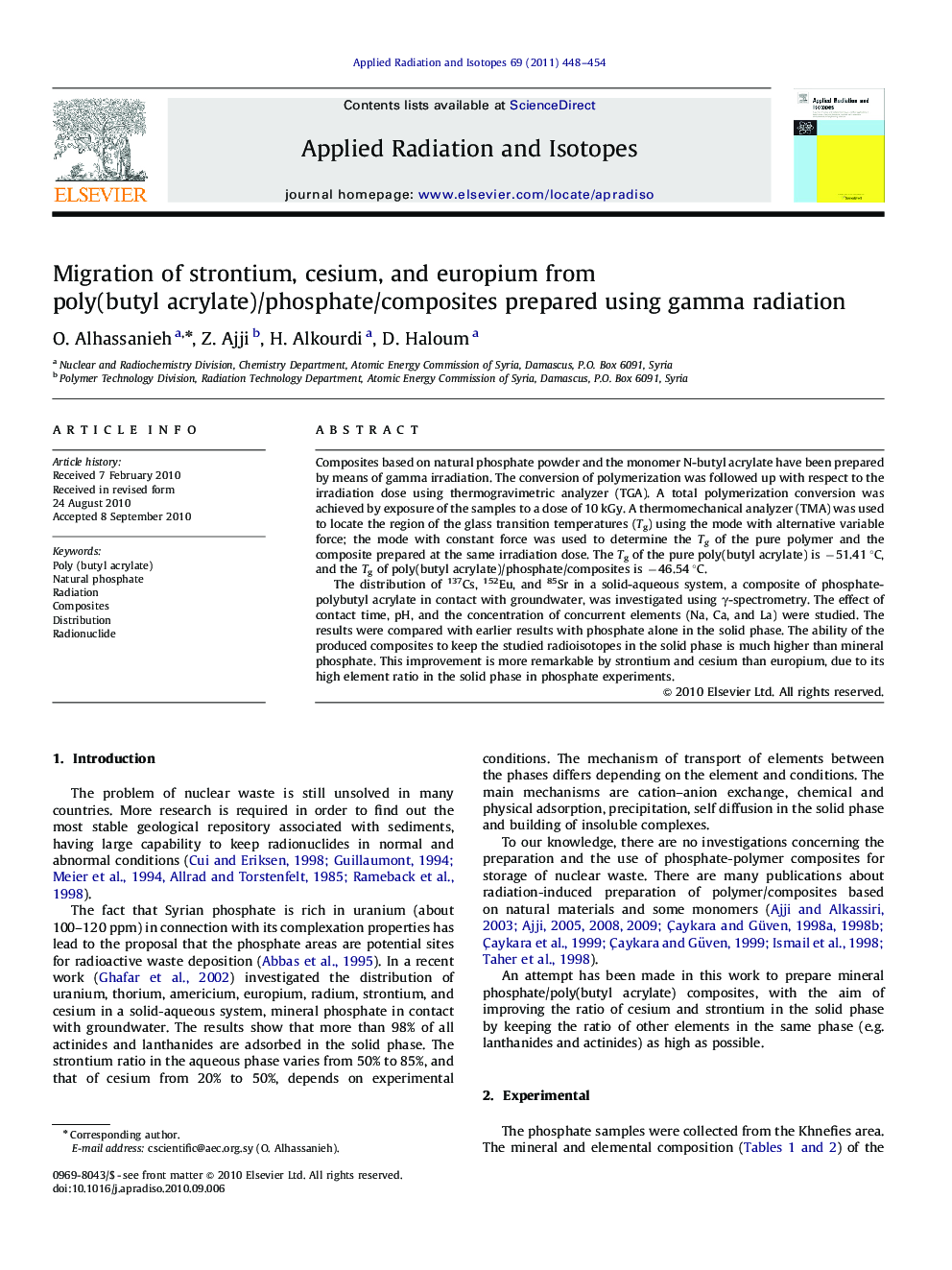| Article ID | Journal | Published Year | Pages | File Type |
|---|---|---|---|---|
| 10730506 | Applied Radiation and Isotopes | 2011 | 7 Pages |
Abstract
The distribution of 137Cs, 152Eu, and 85Sr in a solid-aqueous system, a composite of phosphate-polybutyl acrylate in contact with groundwater, was investigated using γ-spectrometry. The effect of contact time, pH, and the concentration of concurrent elements (Na, Ca, and La) were studied. The results were compared with earlier results with phosphate alone in the solid phase. The ability of the produced composites to keep the studied radioisotopes in the solid phase is much higher than mineral phosphate. This improvement is more remarkable by strontium and cesium than europium, due to its high element ratio in the solid phase in phosphate experiments.
Related Topics
Physical Sciences and Engineering
Physics and Astronomy
Radiation
Authors
O. Alhassanieh, Z. Ajji, H. Alkourdi, D. Haloum,
